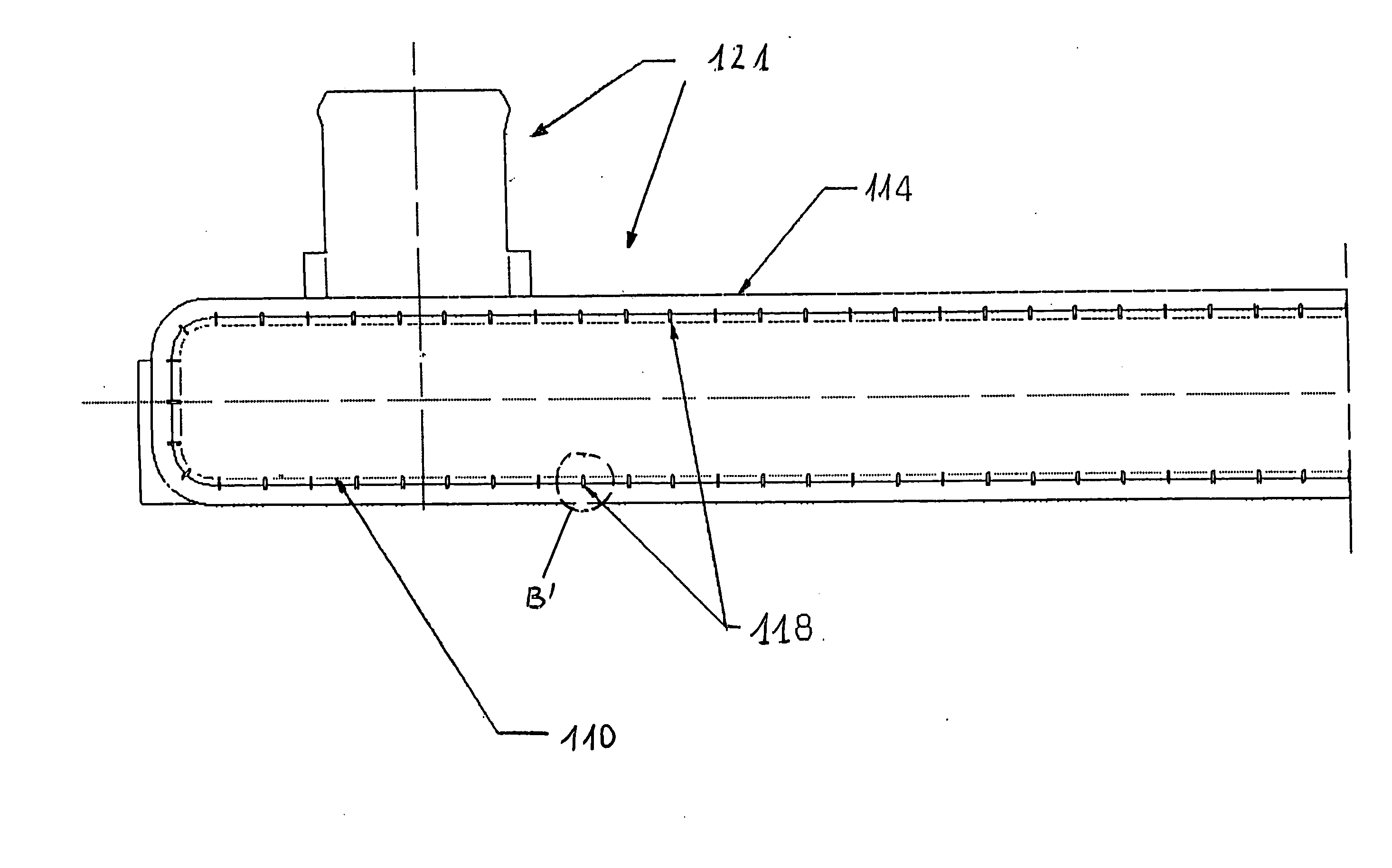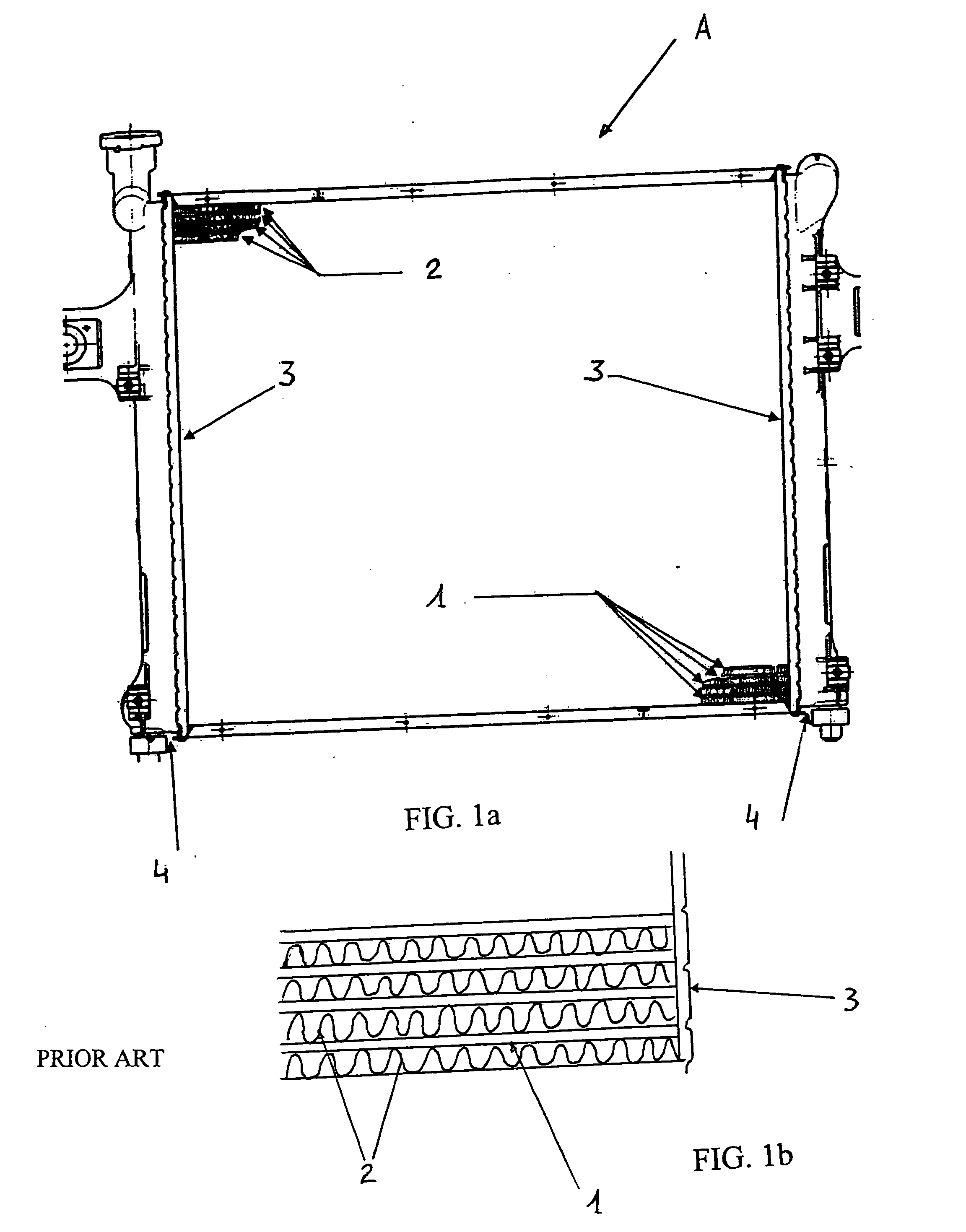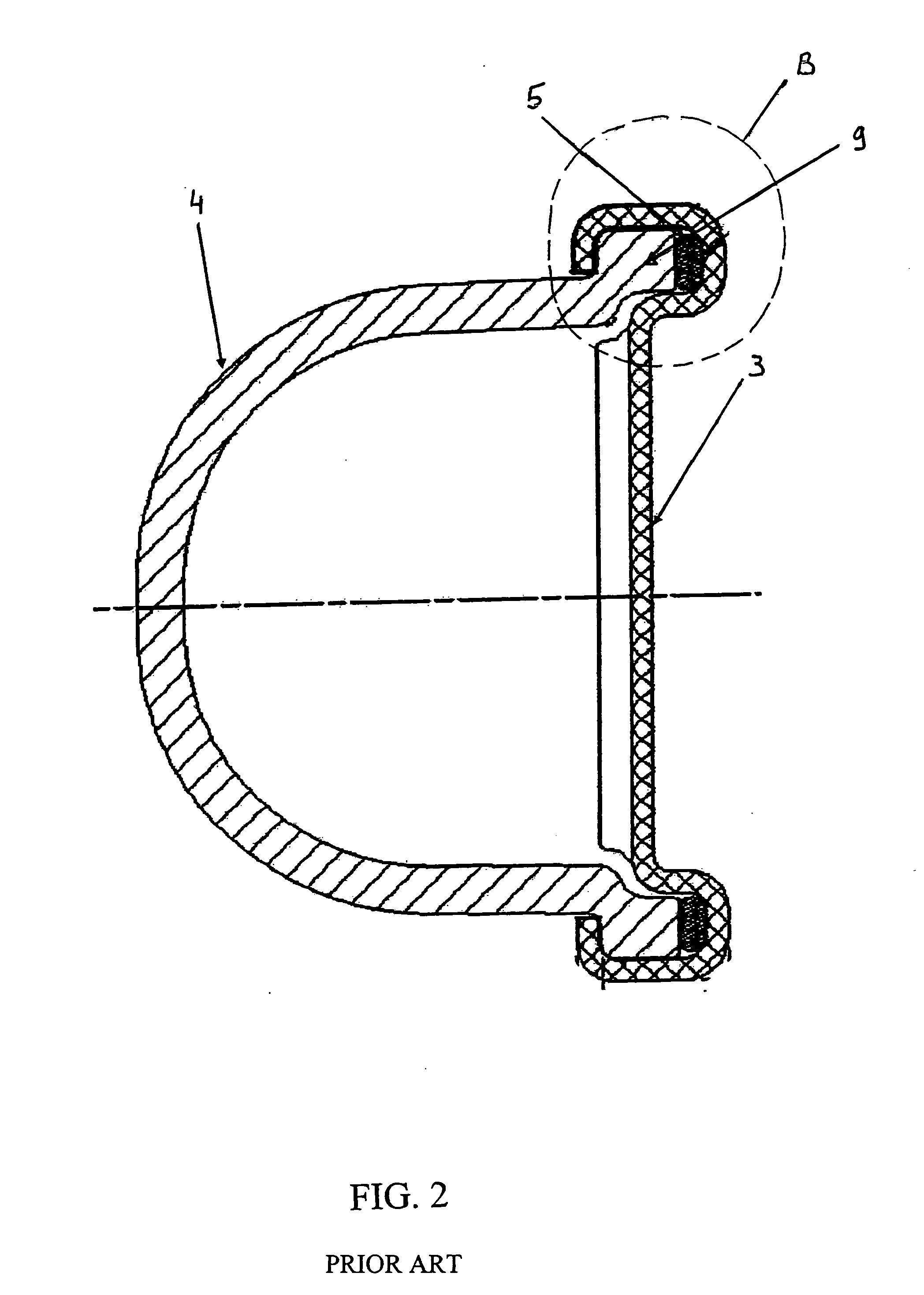Detection system for localizing defective seals in heat exchangers
a technology of heat exchanger and seal, which is applied in the direction of heat exchange apparatus safety devices, light and heating equipment, transportation and packaging, etc., to achieve the effects of reducing or eliminating customer returns, increasing mass, and widening or widening
- Summary
- Abstract
- Description
- Claims
- Application Information
AI Technical Summary
Benefits of technology
Problems solved by technology
Method used
Image
Examples
Embodiment Construction
[0031] As described above and herein below, the means for detecting an inappropriate, incomplete or temporary seal, in accordance with an aspect of the present invention, may consist of modifications, deformations, perforations, cut-outs, scratches or the like, that serve as ‘channels’ or ‘grooves’ in the header or end tanks, preferably in the end tank, or in the end tank and header. Therefore, the actual shape or orientation of the means can vary accordingly to how and where it is positioned or the header or end tank. The means for detecting temporary seals (detecting future potential leaks) provides for a positive leak path in the case that the sealing means or gasket is misaligned or improperly positioned in the tank to header joint.
[0032] In a preferred embodiment of the present invention, a positive leak path is formed by a channel or groove located on an end tank. Preferred is where a plurality of channels or grooves is located on the end tanks. Also preferred is where a posi...
PUM
 Login to View More
Login to View More Abstract
Description
Claims
Application Information
 Login to View More
Login to View More - R&D
- Intellectual Property
- Life Sciences
- Materials
- Tech Scout
- Unparalleled Data Quality
- Higher Quality Content
- 60% Fewer Hallucinations
Browse by: Latest US Patents, China's latest patents, Technical Efficacy Thesaurus, Application Domain, Technology Topic, Popular Technical Reports.
© 2025 PatSnap. All rights reserved.Legal|Privacy policy|Modern Slavery Act Transparency Statement|Sitemap|About US| Contact US: help@patsnap.com



